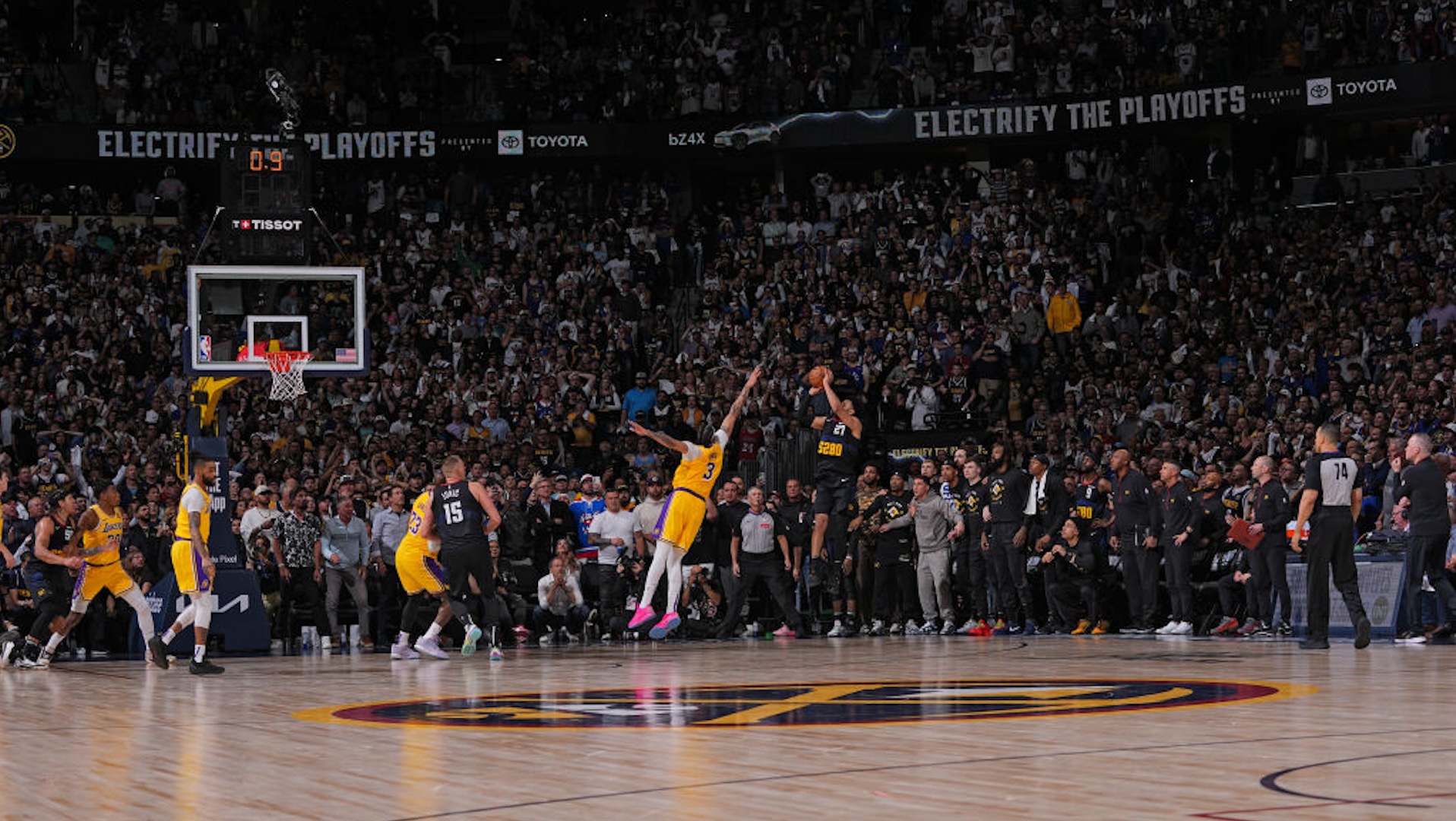Please Remove Me From This List
10:33 AM EST on December 15, 2022

At the risk of sounding like an idiot, I did not realize the Sight and Sound poll was a big deal. In June, an editor I had pitched some film pieces to—never taken—asked for my current email. I didn’t make the connection at the time, but I have no doubt she was the reason that at the end of July I got an email with the subject line: “Vote in Sight and Sound’s Greatest Films of All Time poll.” Uhm, no thank you. But the deadline was not until the beginning of August, and in the interim I started noticing people on Twitter talking about this poll. I mentioned it to a friend, who is more enmeshed in the film scene than I am. He hadn’t himself been invited but told me it was a once-a-decade poll (that information had been in the email I had clearly not read in my haste to dismiss it) and that, yes, a bunch of critics were mad they hadn’t been invited. I felt bad—like I didn’t deserve the vote I got. Some 1,639 people (up from 846 since the last installment) were invited, but I still felt guilty. When I started speaking to other critics who were spending weeks preparing their ballots, I felt even worse.
I watch films constantly. I read about them constantly. I have since I was a kid. But I am not a film scholar (if you mistakenly think you are, “real” film critics will disabuse you of that notion instantly). I know it is de rigueur now to claim that there is no such thing as objectivity, but let’s be real: criticism, taste, is only authorized when it comes from specific people and specific places. In his piece about the poll, the New Yorker’s Richard Brody, who admitted to a “little burst of gratification” at one of his choices leading the list, considered the critical establishment warmly: “Lists are solo acts of personal passion; voting acknowledges that one is part of a community. While there’s no allegiance or deference invoked by the results of a poll (as there is in an election), the poll’s outcomes are a satisfying reminder that it isn’t only family and friends who share one’s strongest enthusiasms. If a critic feels confident going out on a limb, it’s because of the implicit understanding that there’s a tree.”
It makes sense to view this tree with affection when you are safely housed within its trunk, as Brody and a handful of other staff critics are. Outside of it, where I sit—I don’t know, on a grassy knoll or some shit—as a freelance cultural critic, it feels like a cheap source of Christmas gift ideas at best, and alienating at worst. It’s why I groaned when I saw that email. Because I knew there was a right answer, no matter how much everyone said there wasn’t. And I knew mine would be wrong. And I was right—not one of the movies I chose ended up on the list. The list had changed here and there—for the first time in its 80 years it was topped by a film made by a woman, Belgian filmmaker Chantal Akerman’s quotidian-paced, three-and-a-half-hour eye-level meditation on domesticity, Jeanne Dielman, 23, quai du Commerce, 1080 Bruxelles (wrote B. Ruby Rich of the 1975 film, “Never before has the materiality of woman’s time in the home been rendered so viscerally”). But the results had not changed as much as people thought they would with an influx of new voices with increasing access to films of all kinds. As Scott Tobias wrote at The A.V. Club a decade ago, when Vertigo kicked Citizen Kane out of the top spot it had held since 1962, “A radically altered Sight & Sound list would be weak and destabilizing; breaking into the Top 10 should be slow and carefully considered. For now, just losing Citizen Kane is radical enough, like having to orbit around a different sun.”
I understand the impulse to make lists—the best this, the worst that, awards and shit. Civilization has been doing it since ... the start of civilization. And it’s the worst at the end of the year—you can’t turn a corner right now without smacking into some best-of-the-year roundup or other. But it does seem worse of late. I expect that’s for many reasons, not least of which is because we seem to be running out of time existentially, but more specifically because of the way the world has been organized according to technocratic efficiency. I recently watched Moneyball for the first time so maybe this is on my mind, but numerically evaluating everything, even things that are unquantifiable, seems so very of our time. Not just capitalistically putting a price on everything, but reducing everything to a binary: good or bad, right or wrong. It’s a way to treat everything expeditiously, even art. Even fun stuff. The algorithm promises the right kind of fun, budgeting time for maximal consumption. But why are the choices always the fucking same even with things that fundamentally defy ranking? Sour grapes aside, when filmmaker Paul Schrader wrote in response to the list, “It feels off, as if someone had put their thumb on the scale,” the analogy made sense. It feels off not because he is right to be skeptical about which films have been chosen, but because cinema itself has been reduced to statistics.
Within this context, I find it hard to get too excited about Jeanne Dielman’s score. Yes, it is slow; yes, it is made by a woman; yes, it is European; yes, it is exactly my shit. But it is less notable for being confirmation of my taste, as it is the taste of critics of import. “The film’s ascension in the rankings (it was thirty-sixth in 2012) can be ascribed to a wider film culture catching up with the longtime views of hard-core cinéastes,” Jessica Winter wrote at the New Yorker, “as well as a general and welcome broadening of the categories of human experience, labor, and behavior that are deemed worthy of artistic treatment.” The choice to crown it No. 1 flatters Akerman (who died in 2015) less than the critics who recognized her.
The idea of canonizing anything always brings me discomfort because of how badly it has gone in the past—how insular it has been, how repetitive. When so many critics are operating within the same pond, the idea of what is best and what is not is prescribed by the limits of the past. Critics act like they are choosing out of thin air, but the choices come readymade. In a piece in the Los Angeles Review of Books published before the poll went live, Brian R. Jacobson all but predicted Jeanne Dielman would top the list, in the same way you can predict the MacArthur grant will likely go to someone from an Ivy. “We rely on experts to turn subjective assessments of quality into near-objective measures of superiority. But in a time when expertise—and who can become an expert, pass judgment, and establish objectivity—has increasingly been called into question, the power and role of ranking exercises like Sight & Sound’s ‘best of’ list deserve as much scrutiny as the outcome of the poll itself,” Jacobson wrote, adding, “They are symptoms of critical stagnation in the dominant film culture, or, if you happen to be one of its adherents, evidence of critical consensus.”
The problem with these lists and these rankings and these favorites is that they circumvent discovery—instead, they dictate. The reason people get excited by word-of-mouth recommendations—rarer and rarer these days—is because they come with a pulse. A list doesn’t. A list is assigned by an organization. A list is anemic. A list removes the desire that you started with. A list is fake in the way that finding something out for yourself is not. Imagine if we treated art with the same richness as we treat sports, with the same nuance with which we consider players (Moneyball notwithstanding). But there is no goal in art; it is impossible to quantify until an artist transcends the work and becomes a commodity. That is when a Van Gogh becomes currency. Or a Banksy is stolen off a wall like wad of cash. In a 2007 talk on the “aestheticized equity” of art, Professor Donald Kuspit described the evaluation of art as a rigged game: “Paying a certain amount of money for a work of art can be compared to placing a bet on a number in roulette. It is in fact less of a gamble, for the more money one places on the art number the more one guarantees that it will win the art game. Big money guarantees big art historical returns—good art historical fortune as well as a very good economic future. It is a way of controlling the game. It is a way of fixing the spin of fortune’s wheel so that it is always in one’s favor.”
But not mine. My favorite books are never on the list. My favorite movies are clearly not, either. When I walk through galleries, there are often too many people in front of the more famous works to really take them in, and yet, it’s the vibrant red of a skirt, the texture of a flower, the expression of a face on some lesser-known canvas that tends to stop me in my tracks. It’s the unplanned drop into a tiny gallery on the way to a bigger one that is memorable. The fact that you could possibly curate the culture towards a person’s best experience is laughable—the only reason to try is to make up for the glut of distraction and the paucity of anything real within it. Visit a place where galleries are free, where art is better funded, and you will find a community that is more artistically informed. It’s not because they are smarter. It’s not because they are higher brow, or richer. It’s because while steeped in accessible culture, they are given space to choose for themselves. They can formulate their own taste. They don’t need a list.
I’ll give the last word to Elena Gorfinkel, whom I discovered (ha) through Jacobson’s L.A. Review piece. In 2019, the film scholar (and author of a very apropos sounding book that I now really want to read: Aesthetic Strike: Cinemas of Exhaustion) wrote a manifesto against lists in Another Gaze, and while it may sometimes skirt hyperbole, at its core it is no less true: “Every list is by necessity impossible, and must remain unwritten, a private reckoning. The unwritten list tarries with the inevitable vortex of unknowability into which all films will certainly fall, unless we can defend and describe them better, making space for their work as live and active forms ... If we wash out our eyes and ears and minds, we will find that what clings to us, after the suds clear, are the tendrils of another cinematic world, of images, spaces, voices, passages, struggles, and time: time recovered from its theft by narcissistic cinephilia’s allegiance with capital.”
OK, fine, maybe that’s a little too heady. I’ll give the actual last word to Akerman, who had a fitting response to being invited to vote in a documentary film poll by Sight and Sound in 2014, eight years before her movie would summit their flagship list. “I don’t really like the idea, it is just like at school,” she wrote. “I just don’t understand why you always want to classified everything, sorry.”
If you liked this blog, please share it! Your referrals help Defector reach new readers, and those new readers always get a few free blogs before encountering our paywall.
Stay in touch
Sign up for our free newsletter




